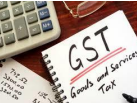Newsletter
Lay Dodd News - Season's Greetings 2017
29 November 2017
Our last day of business will be Friday, 22 December 2017 and we will re-open on Monday, 15 January 2018
Our warmest greetings and best wishes for the New Year
RETIRING AS A TRUSTEE?
There is a process that should avoid any problems down the line.
Many people agree to act as trustees of trusts set up by friends or relatives on the basis that they wish to help out or assist their friend or relative in some way. Eventually it comes time to retire as trustee for reasons such as age, the winding up of the trust or other changes of circumstance.
Retiring as a trustee is not as simple as it sounds and there are a number of potential liabilities that need to be covered off. It’s not widely known that when accepting appointment as trustee, you are taking on a number of personal obligations and accountablities. Therefore, it’s essential that once you stand down you are completely released from any ongoing liabilities.
FOLLOW THE PROCESS
If you want to retire as trustee you need to ensure that you are fully released and protected from any obligations:
- It’s essential that the document recording your retirement follows the terms of the trust deed. For example, if the trust deed requires there to be three trustees at all times and you attempt to retire leaving only two trustees, then your retirement is likely to be ineffective until a replacement trustee is appointed.
- The documents recording your retirement must be signed by all trustes including you, the continuing trustees and any new trustees. There are legal requirements that must be met to be effective.
- If the trust owns property, the individual names of the trustees will be recorded on the title to that property; there will be no reference to the name of the trust itself on the title. It’s essential that the documents be completed to get your name off the title and to ensure it’s registered in the names of the continuing trustees and any new or replacement trustees.
- If there’s a mortgage or guarantee provided by the trustees you must get the consent of the lender to the release of your personal obligations. In many cases the lender will require new documents to be completed by the remaining or new trustees.
- In order to transfer the trust property over to the new trustees, it is necessary for the trust to have an IRD number. Many trusts which don’t earn income have not obtained IRD numbers. However, to transfer the property over to the continuing / new trustees an IRD number will need to be obtained.
- Any signing authorities with the trust’s bank need to be updated, and the retiring trustee must be taken off any mandates or signing authority forms.
- The IRD must be advised, in writing, that a trustee has retired otherwise it will take the view that the retiring trustee remains liable for any tax.
- The local authority will also need to be advised once a trustee has retired otherwise it will assume that the trustees in its records are personally liable for the rates on the trust’s property.
- If the Trust holds shares in a company, then the trustees are required to advise the Companies Office of any changes.
It’s important that you insist on all these steps being followed through even if it’s inconvenient to other parties and some institutions are slow to respond. If you don’t ensure that all these matters have been completed, it may result in significant personal liability for you. We recommend that the trustees seek legal advice for a number of these issues.
PASSWORD PROTECTION
TWO-FACTOR AUTHENTICATION: SECURE YOUR EMAIL AND DATA
It’s easy to add an extra layer of security to your accounts and devices by turning on two-step verification – also known as multi-factor, two-factor or two-step authentication. It takes just a few minutes to set up.
WHY YOU NEED IT?
Passwords can be guessed or stolen. With two-factor authentication, even if an attacker gets your password, it won’t be enough to sign into your account.
Paul Macpherson, Xero’s head of security, says he can’t recommend it highly enough. “Even if they compromise your password, if you have two-step authentication enabled, it’s a really good roadblock to the bad guy getting into your account.”
You can use two-factor authentication to add security to most online accounts. Many providers offer it as an option within your settings. You can also set up two-step verification to access your devices – laptops, tablets, smartphones, and even some game consoles.
WHAT IS TWO-FACTOR AUTHENTICATION?

Two-factor authentication adds a second layer of identity verification to strengthen your login protection.
Your password is step or factor one. Step two locks in extra security. Common examples include:
- A code to your phone via SMS
- A physical token or app on your phone that generates a code
- A fingerprint scan or voice recognition
How to set it up
Different sites do two-factor authentication in different ways, but it usually only takes a minute or so to set up. You’ll often find it in your account or security settings.
Once two-factor authentication is set up, you usually only have to authenticate yourself if you log into your account on a new device.
Read more about Two-Factor Authentication at:
Document loans to family members or other associated persons

A recent Court decision relating to whether a gift had been made is extremely interesting. Assistance was provided by parents to a daughter and son-in-law in respect of the purchase of a family home. The relationship between the daughter and the son-in-law dissolved and the daughter’s parents asked for repayment of the “loan”. The former son-inlaw said the assistance was a gift and not a loan, and therefore no repayment was required. The Court decided, on the balance of evidence that there was loan, albeit, that the loan was undocumented.
The lessons here are:
- Document all loans;
- Execute the documents; and
- If there are gifts, document the gifts.
DOES YOUR RENTAL HOME MEET THE NEW INSULATION STANDARDS?

Ceiling and underfloor insulation must be installed, where reasonably practicable in all rental properties by July 2019. We know it may feel like there is plenty of time, but it’s important to make a start by assessing your rental’s insulation requirements so you know what work needs to be done.
I need to retrofit insulation, how much is it?
As a rough guide, the average cost of paying a professional installer to put in both ceiling and floor insulation is approximately $3,400 excluding GST for a 96m2 property.
Before choosing a product, check the cost per square metre against performance – higher thermal resistance or R-value. The prices of lower and higher-performing insulation products are often similar.
Help to cover the cost?
EECA currently offers grants that provide 50% of the cost of ceiling and underfloor insulation in rentals with low-income tenants. The grants are currently available until the end of June 2019.
Read more about the insulation standards in your region at:
https://www.tenancy.govt.nz/maintenance-and-inspections/insulation/compulsory-insulation/
From IRD In Brief
International tax – top 10 misconceptions for individuals

New Zealand has a large migrant population as well as ex-pat executives, many of whom come from countries with quite different tax systems. International tax compliance can be complex and difficult. To help you get it right, the IRD has compiled a list of commonly misunderstood tax facts relating to individuals:
- New Zealand residents aren’t just taxed on the income they earn in New Zealand; they’re also taxed on their worldwide income.
- If you leave the country but maintain a permanent place of abode here, you’re still a New Zealand resident for tax purposes.
- Foreign income including investments (even if deposited in an offshore account or left on a foreign credit card) is taxable in New Zealand even if it’s not repatriated to New Zealand.
- Equally, the fact that withholding tax may have been deducted on foreign income doesn’t mean that this income is no longer taxable in New Zealand.
- A foreign tax credit may be available but only where the tax involved is not subsequently refunded (even in a later income year), it’s substantially similar to income tax and can’t exceed the tax otherwise payable on the underlying income in New Zealand.
- Not all overseas pension payments are tax-free, certain ones may be fully taxable in New Zealand.
- Allowances that may be treated as tax-free in other countries (for example, living-away-from-home allowances) are generally fully taxable in New Zealand.
- The temporary tax exemption on foreign income for transitional residents expires after 48 months and there’s no entitlement to Working for Families Tax Credits during the period of the exemption.

QUESTION: A NZ company does contracting work in Australia. As the NZ Company has a permanent establishment in NZ and does not exceed 183 days in Australia in any 12-month rolling period my understanding of the DTA is any income earned is only declared in NZ. Does the NZ company need to consider Australian GST registration or not as they are a company?
ANSWER: As long as the NZ company doesn’t have a permanent establishment in Australia there is no requirement to declare the income earned from Australian customers in Australia. As you are providing services from NZ there isn’t a requirement to register for GST.
OCTOBER / NOVEMBER 2017 GST RETURNS

Please remember that GST payable for the October / November 2017 period must be paid to the Inland Revenue by the 15th January 2018. For those clients whose GST returns we calculate, for us to have your GST liability calculated in time, we must have your records in this office no later than Monday, 11th December 2017.
PROVISIONAL TAX INSTALMENT REMINDER

The second installment of provisional tax is due on 15th January 2018. We will be sending out reminder notices on 14th December 2017 to applicable clients.
THANK YOU FOR YOUR SUPPORT
We would like to take this opportunity to thank all our clients for your continued support of our business – it is very much appreciated and acknowledged.
For those clients that have joined us during the year, we thank you for choosing our firm.
